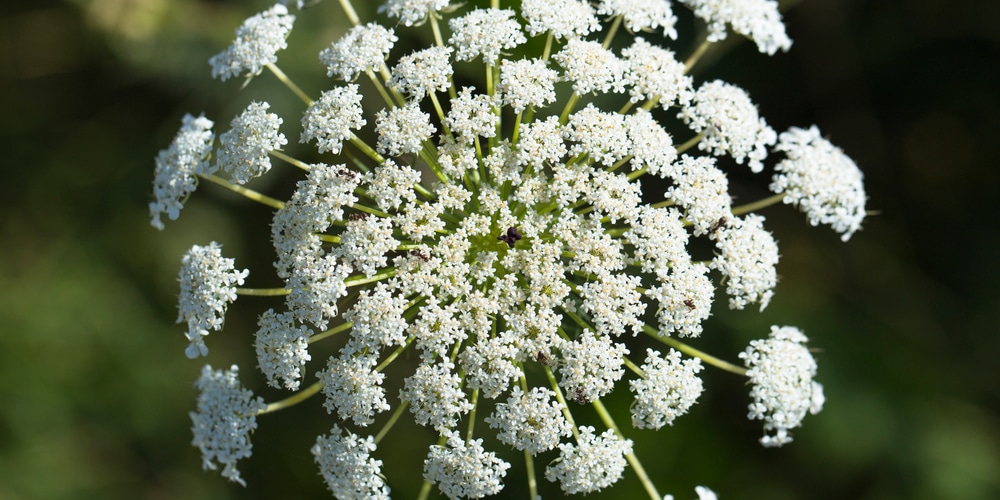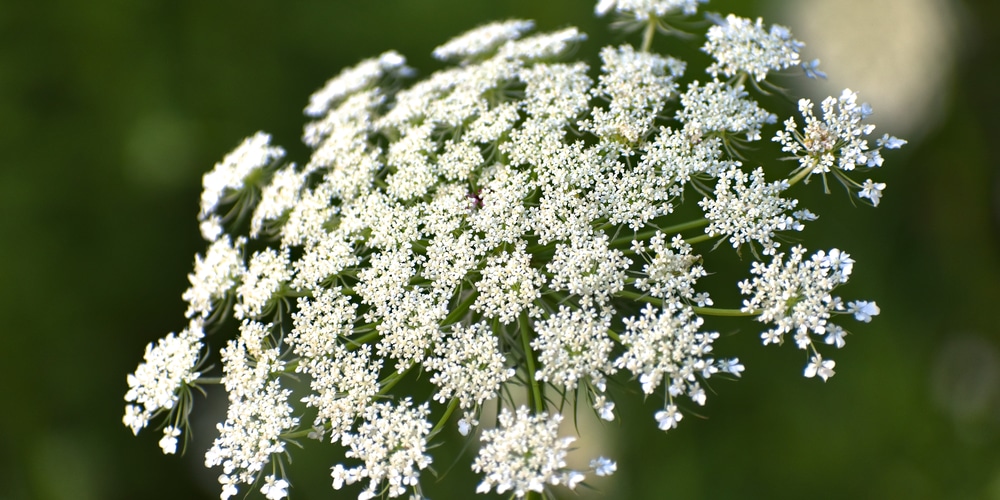An attractive flower named for its similarity to delicate lace, Queen Anne’s Lace has become an invasive weed in the United States. The plant was brought over from Europe and has become naturalized. Many species eat Queen Anne’s Lace, including butterflies, for nectar.
Despite providing a food source in the ecosystem, Queen Anne’s Lace easily chokes out native species and crops. Because of this, many people wonder how to get rid of Queen Anne’s Lace in their yard or garden. Luckily, there are few solutions.
About Queen Anne’s Lace
Identifying Queen Anne’s Lace is the first step in the removal process. This species, also known as wild carrot, is biennial, so its lifespan lasts two years. In most cases, flowers don’t bloom until after winter, but some may flower the first year.
These plants look like the tops of carrot plants growing in the garden. Cultivars of a subspecies of wild carrot are the origins of the popular vegetable. Like modern carrots, Queen Anne lace is technically edible in the early stages of growth. However, there are more than enough reasons to avoid consuming the plant.
Poisonous Doppelgangers, Toxicity, and Super Seed Spreaders
The spiraling fern-like leaves of Queen Anne’s Lace look very similar to poison hemlock varieties. There are a few ways to tell the difference. Hemlock tends to grow taller than Queen Anne’s lace which grows to around two to four feet tall. Poisonous hemlock reaches up to eight feet. Another indicator of hemlock is a purplish mottling on the stems.
Queen Anne’s Lace does have some toxicity, especially in the foliage when wet, that can cause skin irritation in some people. It’s a smart idea to wear protection when handling this plant. Most people and animals aren’t affected by the plants, but it’s better to be safe than sorry.
These plants are super seed producers. One Queen Anne’s Lace plant is capable of producing thousands of seeds. Not only does this plant create many seeds, but they’re also long-lasting. Seeds from Queen Anne’s Lace live up to seven years and germinate anytime.
Manual Removal
One of the best ways to get rid of Queen Anne’s Lace is by hand. Pulling out these weeds before they flower helps stop the spread of seed. This method is best for small clusters of the noxious weed in areas like a garden where the soil cannot be turned over or cut.
Mowing before the plant flowers is an effective means of control in fields. Cutting off the flower at the head is a small-scale way to achieve the same effect. Be aware that established Queen Anne’s Lace may already have dormant seeds that could pop up next growing season.
Frequent tilling on the area reduces the plant’s ability to take root. Queen Anne’s Lace grows a large central taproot, the part of the plant that survives the winter. Uprooting Queen Anne’s Lace before its second season, when it flowers and spreads seed, will help eliminate the weed.
Biological Options
While this isn’t an option for everyone, many grazing animals help keep Queen Anne’s Lace under control. Even though the plant has some toxicity, eating the plant won’t affect most animals. However, dairy cows that consume too much Queen Anne’s Lace may produce tainted milk.
Smaller animals like insects can also help keep Queen Anne’s Lace in check. Consider picking up beneficial bugs at a nursery or online. Species like the lygus bug and carrot rust fly maggots eat the plant, helping keep the population down.
Herbicides
Herbicides should only be used as a last resort when dealing with Queen Anne’s Lace. Introducing chemicals isn’t suitable for all situations, especially when the goal of removal of the weed is to allow native species to flourish.
Dealing with Queen Anne’s Lace infestations in hay fields or pastures can be difficult, and herbicides might not be the correct solution. A common herbicide, 2,4-D, can be useful against the plant but can also result in resistant weeds in a few years with continued use.
To use herbicides effectively, target young plants in spring. Mature plants, however, are more susceptible during the fall. For large areas, the herbicide isn’t an inexpensive option. For most situations, mowing will be the cheapest and fastest option for dealing with Queen Anne’s Lace.
Final Thoughts
With the knowledge of how to get rid of Queen Anne’s Lace, gardeners can progress against this invasive species spread. Though the process may be time-consuming, Queen Anne’s Lace can be removed.
Most cases clear up much sooner, especially if caught early. Try out the techniques outlined here to keep Queen Anne’s Lace from overshadowing native species for a thriving environment.
Queen Anne’s Lace looks very similar to Hogweed and yarrow, which can also be removed in the same way.

